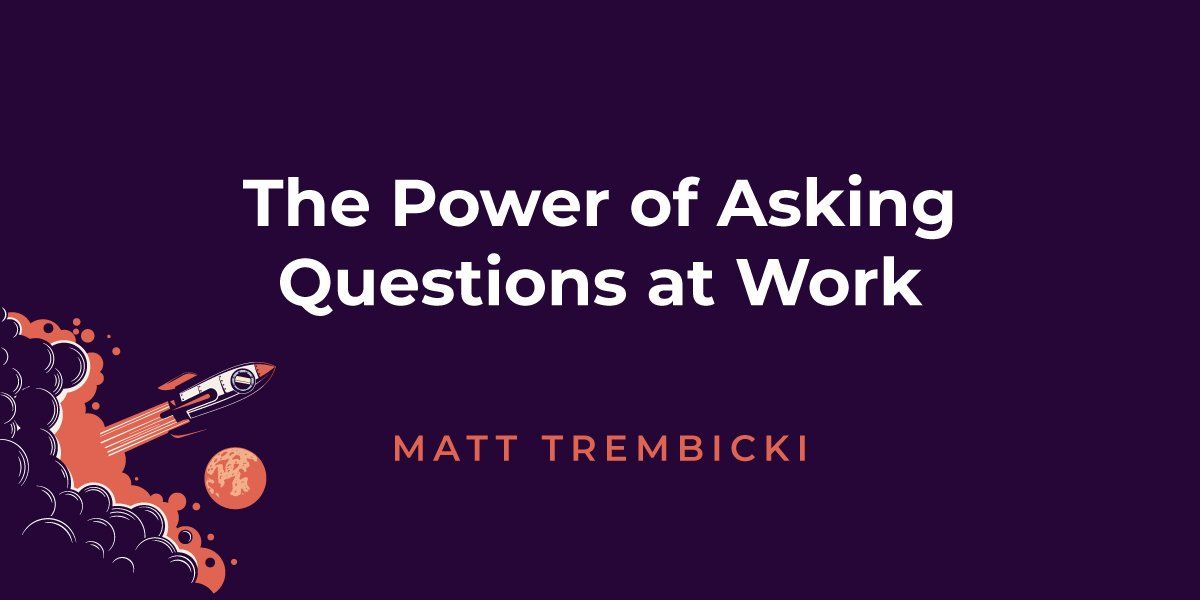The Power of Asking Questions at Work
As children, we ask questions constantly. As we get older, our inquisitive nature changes, and we begin asking fewer questions because we worry about looking foolish.
Instead of bowing to the pressure of what other people think, we need to embrace asking questions as leaders and show others by leading by example that our inquisitive natures should never change. This is especially true in the business world. Let’s dive a little deeper into why—and how.
Why Asking Questions at Work is Crucial
A statistic in the Harvard Business Review revealed that many adults with children estimate that about 70–80% of their children’s dialogues were made up of questions, while among the adults, the estimate was a mere 15-25%.
Why? Because although we are often encouraged to ask questions as children in a classroom setting when we are young, questioning anything as an adult (especially in the workplace) is less acceptable and not as enthusiastically encouraged. After all, no one wants to be the trouble-maker or the person causing a hold-up in the process of a “let’s just get it done” corporate culture.
The side effect we often see by not leaving space for asking questions is poor decision making—a pitfall that could easily have been avoided with just perhaps one or two “what about this approach instead?” inquiries.
The Leader Who Asks Questions
Forbes said it best in an article describing just how vital leaders are for normalizing—and encouraging—questions in the office. How? By leading by example. In other words, by asking questions themselves.
“The healthiest cultures are led by leaders who model how to both ‘ask’ and ‘respond’ openly to a question without becoming defensive. They normalize the art of the question and personally model for others how to question norms, peers, and authorities in nonthreatening ways. Truth be known, only healthy cultures constructively encourage dissenting views. The highest performing team[s] invite the candid opinions of others. They practice asking and discussing courageous questions and recognize it as essential to the culture.”
Also, no one wants to follow leaders that think they already have everything figured out.
A Culture of Asking Questions Leads to Growth
The right questions have the ability to grow both an individual’s career or an entire business’ culture and trajectory. But this growth can only happen from the inside out, and it begins with leaders asking questions.
You’ve most likely heard the saying, “You have not, because you ask not,” and it’s true. If you don’t step up and start asking, nothing will change—and you probably won’t see growth.
Wayne Baker, Ph.D. and author of “All You Have To Do Is Ask: How To Master the Most Important Skill for Success,” said: “Asking is key to success … Our research shows that 70 to 90 percent of help is given in response to people who ask for it. But you have to ask for it.”
Nathan Young, marketing consultant and co-founder of 600 & Rising, also said, “Even simple questions are powerful. Asking ‘Why?’ provokes reflection. Asking ‘Why not?’ drives innovation.”
And innovation is priceless because if we are not innovating and growing, we will be left behind in the dust of our competitors. Some of the most innovative organizations in the world have a culture that centers around encouraging asking questions.
Exploration provokes, excites, and inspires—the breeding ground for impactful innovation. And as far as growth goes, the best questions force us to reassess what we have done in the past—and are doing now—and invite us to find a better path/way forward (read: growth).
Want to learn more? Don’t be afraid to reach out and ask. Contact us today to get started on your journey.




